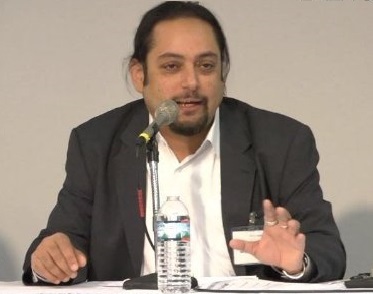2019 Small Business Innovation Research (SBIR) and Small Business Technology Transfer (STTR) Phase II Awards.
August 1, 2019The Department of Energy (DOE) announced the Fiscal Year 2019 Small Business Innovation Research (SBIR) and Small Business Technology Transfer (STTR) Phase II Awards. Among DOE’s Phase II SBIR awards were four Office of Electricity-funded projects totaling more than $4.1 million. These projects will be addressing:
AI for Workforce Development – A major challenge electric utilities will be facing in the foreseeable future is a workforce that is rapidly retiring and the loss of institutional knowledge. This issue will be exacerbated with a shortage of experienced personnel. Innovative technology solutions, such as augmented reality or virtual reality, can be adapted to enable a small number of experienced personnel to supervise or train the electric utility workforce of the future. DOE selected Factual VR Inc. (New Jersey) to continue expanding its hypertunnel concept and its virtual reality and mixed reality efforts to enable technicians in the field to open a shared virtual environment with a remote expert for collaboration. Phase II will link this effort with several AI technologies such as voice and future action recognition.
Advanced Protective Relaying – Protective relays are critical to the safe and reliable operation of the grid. As the power system changes, new technologies, methodologies, processes, materials, and tools are needed to continue advancing the state of the art of protective relaying. DOE selected LuxPoint Inc. (Connecticut) to further development of a bimodal fiber optic distributed sensor that can be embedded in high voltage cables to monitor circuit capacity (amps) and detect and locate ground faults. This monitoring capability will support reconfigurable grids that have greater amounts of distributed energy resources.
Grid-tied Energy Storage Systems – Grid-scale energy storage is a valuable tool to improve the flexibility and resilience of the grid. DOE selected InnoCit (Missouri) to continue Phase II efforts in utilizing Gallium-Nitride (GaN) switches to improve the cost and performance of battery storage systems. A modular GaN based battery inverter will be designed to deliver an output power of 20-200 kW with 99% efficiency. Lower cost, lower weight, smaller footprint, and higher efficiency are among the key features of this inverter.
Smart Grid Communication and Application Architecture – For a secure, resilient, and modernized grid, it is critical that various devices, applications, and systems can seamlessly communicate and coordinate with one another. DOE selected Machfu Inc. (Maryland) to continue work on communication protocols to securely connect legacy devices to new devices on the grid, and to Internet of Things devices beyond the grid edge within a seamless programming environment.
Small businesses play a critical role in this nation’s economy and their historic contribution to innovation is well documented. SBIRs and STTRs are Congressionally-directed programs requiring federal agencies with large research and development (R&D) budgets to set aside a portion of its funding for small businesses. Companies that receive awards in these R&D programs keep the rights to any technology developed and are encouraged to commercialize the technology.
Additional information about the SBIR and STTR programs can be found at the SBIR/STTR website.
David Howard
David Howard is an Engineer within the Office of Electricity. Mr. Howard has over 25 years of industry and federal government experience in the area of power systems engineering, cybersecurity, R&D, and modeling and analytics. He currently manages the three Phase 1 projects that are addressing advanced protective relaying technologies and tools.


